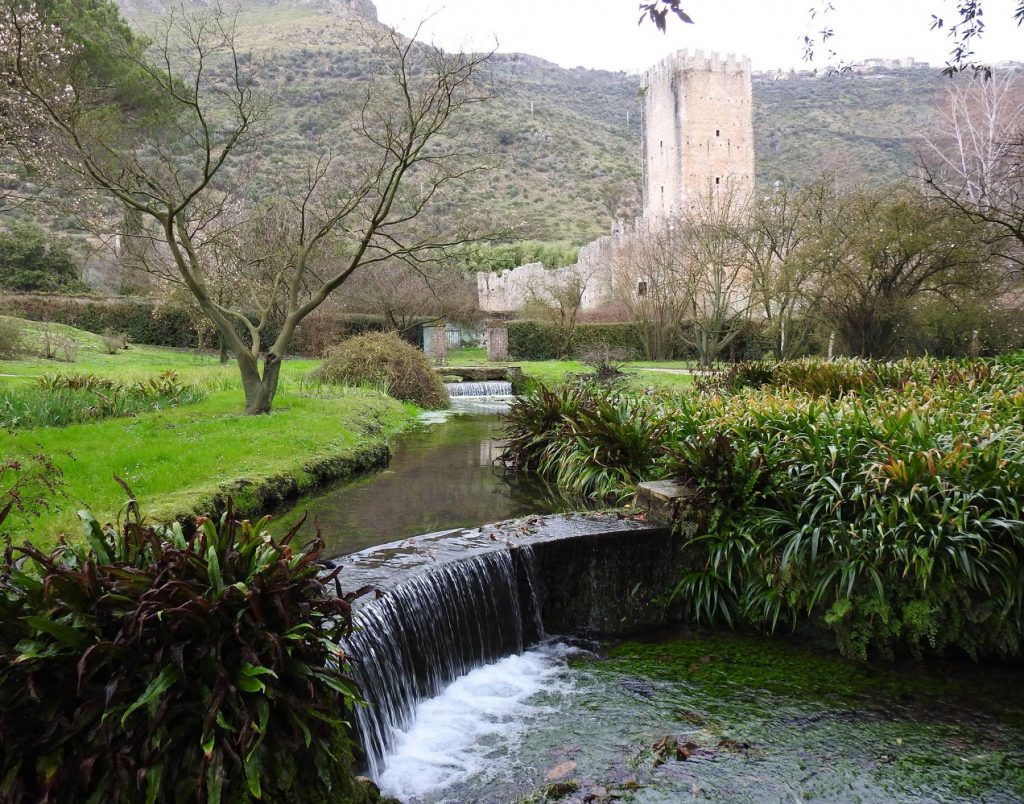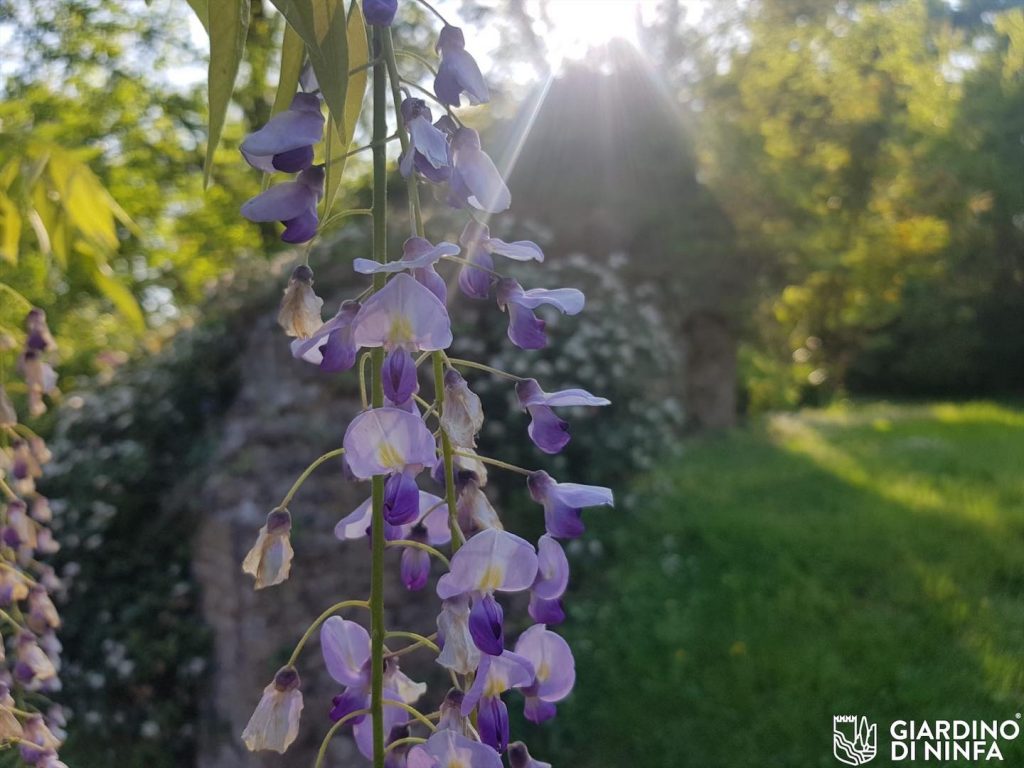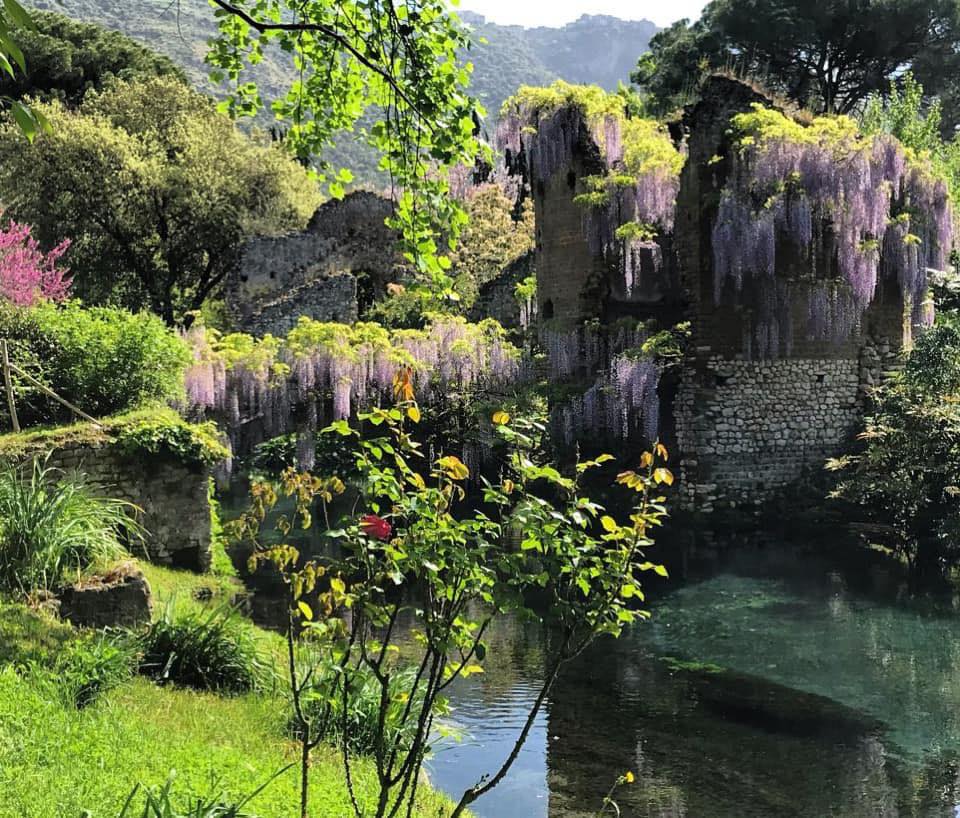Reading time: 5 minutes
Just 80 kilometers southeast of Rome lies a magical world straight out of a fairy tale. It may not be as well-known as many of the other famous sites on the infinitely long bucket list in Italy, but I can assure you that the Ninfa Garden (Il Giardino di Ninfa) is absolutely spectacular. Although slightly tricky to reach, it is well worth the effort.
Ninfa Garden is actually located in the Latina province. If you are traveling by rail, you can take a train from Rome and reach Latina in about 45 minutes. From Latina, there are buses (which can be quite complicated) or the easiest way, is to hire a taxi.

History of the Garden
Just as its name suggests, Ninfa, of course, refers to the nymphs of Greek and Roman mythology who were not exactly goddesses but lived amongst the gods and were associated with nature and especially water. Their beauty is said to have seduced many a mortal and to have born children like Achilles and others. When you visit the gardens, you’ll agree that the name is fitting.
Originally, there was a Roman temple built on the very site of the current garden dedicated to none other than the ninfe. Over the centuries, the garden changed ownership continuously and it wasn’t until the 16th century that Cardinal Nicolò Caetani of Sermoneta began the transformation of what we see today. He had a great appreciation for botany and built a walled garden near the castle. The Caetani’s possession of the garden continued through the years and with each passing century, it was amplified with periods of total abandonment.
The Beginning of the Transformation
It wasn’t until the 1920s that it once again began to take shape and was transformed into an English garden. (Gelasio Caetani’s mother was English). Great additions were made such as holm oaks, cypress, and roses as well as major restoration to the medieval buildings. Other “foreign” influences on the garden’s appearance and variety of flora came from America, this time from Marguerite Chapin, Roffredo Caetani’s American wife. The couple’s daughter, Leila Caetani, was the last heir of Ninfa Garden. She greatly contributed to its current appearance by adding numerous species of roses and magnolias.
Flora and Fauna
The variety of flora is astounding: over 1,300 varieties sprawling 8 plus hectares of land. Plants have been imported from all over the world over the centuries and include Japanese maples, American walnuts, Himalayan pine, Mexican pine, and an astonishing variety of roses. The location is also home to 100 different bird species and is on the migratory path between Africa and Europe. In fact, a large portion of the garden was set aside as a sanctuary by the World Wildlife Fund in 1976.

Its True Charm
If you can believe it, the lush gardens and birds are really only part of Ninfa’s incredible charm. Its many creeks, water sources, fountains, statues, and old ruins are truly what set this garden apart from all others. It has been described by the guides themselves as “organized chaos”.
Some of the ruins date back as early as the 10th century when Ninfa was a prosperous village. Probably the oldest building on the property is what is left of the Church of Santa Maria Maggiore. Some of the original frescoes from the 1100s are still visible. Other ruins on site include the Church of San Giovanni, San Biagio, San Salvatore, San Paolo, San Pietro, and the castle.
Visiting Ninfa Garden
Ninfa Garden is open from April to November with opening weekend on April 6, 2024.
Helpful websites
Official website for Ninfa Gardens
YouTube channel tour of part of the gardens


